
The NHL's twelfth season was one that belonged to the goaltenders, and with the puckstoppers outerworldy performance and prominance would come great changes to the game.
Despite the league making alterations to the on ice product over the years to allow for more offense, goalies adjusted to each move in time. It is perhaps a history lesson that teaches that goaltending, defensive systems and coaching always adapts to what offense counters.

In the 1928-29 season, Canadiens stopper George Hainsworth would register a mindboggling 22 shutouts in 44 games. In winning his third consecutive Vezina Trophy, Hainsworth allowed only 43 goals in the other 22 contests. In his final eight games of the regular season, he let in only 3 goals.
GOALIES RULE
It wasn't only Hainsworth, whose prowess stymied shooters. Goalies across the NHL were improving their numbers annually to the offensive detriment of the shooters fans were paying money to see.
New York Rangers goalie John Ross Roach and the Americans Roy Worters had 13 shutouts. Boston Bruins stopper Tiny Thompson has a dozen whitewashes. Maroons goalie Clint Benedict and the Leafs Lorne Chabot had 11 shutouts each. Detroit Cougars goalie Dolly Dobson had 10 and the Ottawa Senators Alex Connell had 7.

The season's worst club, the last place Pittsburgh Pirates, owners of a dismal 7-29-8 record, allowed only 85 goals.
With 15 scoreless ties in the 1928-29 season, clearly, something needed to be done to open the game up. The NHL governors would gather at season's end to rectify the problem, hopefully once and for all, with rules changes designed to bring more flow to the game.
 During the previous season, tie games had almost doubled, going from 18 to 37 amongst the league's 12 clubs. Perhaps it was due to restricting offensive rules, smarter play, or better coaching. It is quite possible that the NHL had evened out with less disparity between the stronger and weaker teams now that the league had all the best professional players.
During the previous season, tie games had almost doubled, going from 18 to 37 amongst the league's 12 clubs. Perhaps it was due to restricting offensive rules, smarter play, or better coaching. It is quite possible that the NHL had evened out with less disparity between the stronger and weaker teams now that the league had all the best professional players.Either way, it was parity at it's most boring time, and the tie games more than doubled, reaching a total of 94 in 1929.
Needless to say, there were no goal scoring records broken in 1929.
HAINSWORTH EARNS HIS STRIPES
Hainsworth, still with 9 shutouts more than the nearest competition and a goals against average of 0.92, would have a season that would live in infamy. Somehow, despite winning his third consecutive Vezina Trophy in three seasons, the Hart Trophy would go to the American's Worters, who carried his team to second place behind the Canadiens. Worters allowed 10 goals more than Hainsworth, but was viewed as being more valuable to his team, as the Americans squad hardly had the stud defenseman the Habs boasted in Mantha, Leduc, Burke, and Gardiner
 After the death of Georges Vezina, the Canadiens club unofficially retired his jersey #1. Frenchy Lacroix and Herb Rheaume had both worn the number in the season of Vezina's passing, but Habs management deemed any goalie unworthy of the number thereafter. Starting in 1926-27, the number was worn by defenseman Herb Gardiner for two seasons. In 1928-29, the number went to Marty Burke. It was said that if a goalie were to become worthy of Vezina's number, only then would it be allowed onto a goalie's back.
After the death of Georges Vezina, the Canadiens club unofficially retired his jersey #1. Frenchy Lacroix and Herb Rheaume had both worn the number in the season of Vezina's passing, but Habs management deemed any goalie unworthy of the number thereafter. Starting in 1926-27, the number was worn by defenseman Herb Gardiner for two seasons. In 1928-29, the number went to Marty Burke. It was said that if a goalie were to become worthy of Vezina's number, only then would it be allowed onto a goalie's back.The 33 year old Hainsworth meanwhile, had won three consecutive Vezina Trophy's while wearing numbers such as 2, 14, and 12 twice. With 49 shutouts in 132 regular season games, they finally deemed him worthy of the number starting in 1929-30. Oddly, Hainsworth never captured the Vezina Trophy while wearing his number.
GOAL SCORING TAKES A DIVE
Not surprisingly, in this stingiest of NHL season, only two players reached the 20 goal plateau. The Maroons Nels Stewart, a born sniper, hit for 21, but was passed by the Maple Leafs Ace Bailey, for netted one more.
The highest scoring Canadien, Howie Morenz, who had netted 33 a season ago, finished fourth in goals with 17.

Curiously, the Cougars Carson Cooper, a player the Canadiens deemed expendable after only six games two seasons prior, was third with 18 goals.
While remaining the NHL's toughest team to score against, the Canadiens were no longer the league's biggest scoring threat. They managed a total of 71 goals, down a goal per game from their total of 116 a year prior. The distinction of highest scoring team went to the continuously improving Boston Bruins, who scored a hardly daunting 89 goals. The Maple Leafs, improved as well, notched 85. The Cougars and Rangers bested the Habs slightly, netting 72 goals each.
PUNCHLESS HABS KEEP PACE
Perhaps lost to the historical revision of this very particular season is the fact that the Canadiens lost only 7 of 44 contests, including only three games on the road. Despite their drop in goals scored, they still found a way to total the previous season's mark of 59 points and maintain their hold on first place in the Canadian Division.
 While many NHL squads toyed annually with their lineups to find a winning team, the Canadiens under the guidance of Leo Dandurand and coaching of Cecil Hart, kept intact the core of a team that grew better and better with each passing season. Despite not having won the Stanley Cup since 1924, the management had faith in the club, due to it's consecutive first place finishes, that there was not a whole lot of tinkering that needing to be done to make the Habs a winner again.
While many NHL squads toyed annually with their lineups to find a winning team, the Canadiens under the guidance of Leo Dandurand and coaching of Cecil Hart, kept intact the core of a team that grew better and better with each passing season. Despite not having won the Stanley Cup since 1924, the management had faith in the club, due to it's consecutive first place finishes, that there was not a whole lot of tinkering that needing to be done to make the Habs a winner again.GARDINER LENT TO BLACKHAWKS
Prior to the start of training camp, the Canadiens temporarily parted ways with Hart Trophy winner from two seasons back, Herb Gardiner. On August 27, it was decided that the old stalwart no longer fit the team's future plans, and he was conditionally loaned to the Blackhawks for the season to act solely as their coach.
 The condition in the deal was that if Chicago were then to employ Gardiner as a player, then the Canadiens could use their right to recall him, which they did on February 12, after he'd appreared in 13 games with Chicago. He would play the final 7 regular season games, and three more in the playoffs as a Canadien before being dealt to Boston for cash in the spring.
The condition in the deal was that if Chicago were then to employ Gardiner as a player, then the Canadiens could use their right to recall him, which they did on February 12, after he'd appreared in 13 games with Chicago. He would play the final 7 regular season games, and three more in the playoffs as a Canadien before being dealt to Boston for cash in the spring. FOUR NEW CANADIENS
Few players from the team that dropped an overtime loss to the Maroons in 1927-28 would not return this season. Replacing the likes of Léo Lafrance, Charles Langlois and Gizzy Hart were Gerry Carson, Armand Mondou, Arthur Lesieur, and George Mantha.

Lesieur, a 21 year old rearguard who was signed as a free agent on October 30. After appearing in 15 games with Montreal, he was loaned to the Blackhawks for the remainder of the season, as compensation for the recall of Gardiner. Lesieur would remain Canadiens property until 1940, during which time he became well aquainted with the train tracks between Providence and Montreal.
Gerry Carson appeared in 26 games for the Canadiens, but was loaned to the Rangers for the remainder of the season on February 15. He would return to the club thereafter, drifting between Providence and the big club for five seasons.
Mondou, a 23 year old left winger from Yamaska, Quebec, made the team at camp as a free agent, and would remain associated with the club beyond a decade.
ANOTHER BROTHER ACT
George Mantha was the brother of Sylvio. A winger, a six years his sibling's junior at 20, he would have the longest association with the team of all this season's newcomers. A solid defensive forward who never reached high goal totals, the younger Mantha was a sound team citizen who would never see another NHL sweater by the time his big league career ended in 1941.
 The younger Mantha was a versatile addition, as he could perform on both defence and left wing. A fine puck handler with and sharp shooter, he would help most on the power play and in the transition game regardless of position played. Born in Lachine, Quebec, Mantha played junior with the Montreal Victorias and senior with the city's Bell Telephone squad before joining the Canadiens for 21 games this season. Starting next season, Mantha would be a regular in the Canadiens lineup.
The younger Mantha was a versatile addition, as he could perform on both defence and left wing. A fine puck handler with and sharp shooter, he would help most on the power play and in the transition game regardless of position played. Born in Lachine, Quebec, Mantha played junior with the Montreal Victorias and senior with the city's Bell Telephone squad before joining the Canadiens for 21 games this season. Starting next season, Mantha would be a regular in the Canadiens lineup.THE MILLIONAIRES FAN CLUB
For quite a few years now, an assembling of Canadiens fans known as "The Millionaires" had been taking their place in the high priced fifty cent seat area close to the ice. The name had been giving to the group partly in mocking derision from other fans, as "The Millionaires" tended to be die hards who knew how to get behind the team big time. Not only did they have the tendancy to stand for the duration of the games and cheer loudly, but they also were heavily involved with the team, basically becoming it's first unofficial fan club.
 Numbering close to 2,000 by some estimations in the day, "The Millionaires" would band together, figuratively and financially, to honour the Canadiens team and its individual members. Gathering at a local St. Denis street pub for group meetings, they would organize various events ranging from player appreciation nights to parade's downtown, when the Canadiens would defeat the Maroons. They treated players on the Habs with gifts and occasional cash bonuses and at one time it was felt that "The Millionaires" club had the ears of not only the media's influence, but the team's management as well when it came to player moves.
Numbering close to 2,000 by some estimations in the day, "The Millionaires" would band together, figuratively and financially, to honour the Canadiens team and its individual members. Gathering at a local St. Denis street pub for group meetings, they would organize various events ranging from player appreciation nights to parade's downtown, when the Canadiens would defeat the Maroons. They treated players on the Habs with gifts and occasional cash bonuses and at one time it was felt that "The Millionaires" club had the ears of not only the media's influence, but the team's management as well when it came to player moves.HABS PLAYERS GRAB ENDORSEMENT DOLLARS
While it could not be compared to the latter day hockey fever that grips the city of Montreal, the Canadiens stars were often in demand for all sorts of off ice promotions. After the NHL stepped in to forbid players such as Morenz and Joliat from ghostwriting NHL editorials in the local papers, local businesses jumped forth to offer the stars a little extra cash with promotional ads for their companies. Morenz and Joliat would soon be seen modelling garments such as taillored three piece suits, hats, and overcoats. Nothing was said by the league concerning Pit Lepine's endorsements of Buckingham cigarettes.



Lepine's signature would soon adorn bottles of Froz - Ex, and Joliat added to his income via the promotion of Bee Hive Honey, a company that would in time become very involved in the promotion of the NHL game.
MORENZ, PROTECTED STAR, NOT FOR SALE
Morenz was pure gold for the Canadiens and the league, and both the NHL and it's players understood his worth in filling arenas wherever he played. Once, while playing a game at Madison Square Graden against the Rangers, New York coach Lester Patrick informed his players to go easy on Morenz, who was appearing despite favoring a leg injury. Should the Canadiens return to MSG without Morenz in future games, the rink would be half full and good money would go missing
 With Howie Morenz's continued popularity across the league came the inevitable rumours that the Canadiens were perenially about to sell him off for cash. The Boston Bruins were said to make regular inquiries and offers for Morenz, and it was continuously written about in the Toronto media that the Maple Leafs were upping their offer from time to time.
With Howie Morenz's continued popularity across the league came the inevitable rumours that the Canadiens were perenially about to sell him off for cash. The Boston Bruins were said to make regular inquiries and offers for Morenz, and it was continuously written about in the Toronto media that the Maple Leafs were upping their offer from time to time.
Offers began at $25,000 for his services, but there was never truth to the Morenz trade speculation, as far as the Canadiens management were concerned. Runours hit a feverish pitch when it became known that the New York Americans had offered $50,000 for Morenz. Habs managers Létourneau and Dandurand needed to go on record to quash any thought of it by stating that Morenz was not for sale - nor for silver, nor for gold.
CANADIENS GET REVENGE ON MAROONS
The Canadiens avenged their final playoff game loss to the Maroons from last season by going undefeated in 6 games against their Forum rivals. With four wins and two ties, the Canadiens were also outdrawing the Maroons home game crowds on a steady basis.
While the Canadiens packed them in at the Forum, the NHL's biggest crowd to date was for the Bruins upon the opening of the Boston Gardens. A record 17,000 paid attendance on Tuesday, November showed up to see the Habs down the Bruins 1-0.
 HABS ON RADIO
HABS ON RADIOThe Canadiens first radio broadcast took place on December 22 in a home game against Ottawa. Local station CJAD broadcast the game in english. Commentators Arthur Dupont and future Hockey Hall of Fame scribe and Montreal Herald writer Elmer Ferguson brought the game's action into living rooms from the third period on, so as to not disuade folks from attending the game.
SENATORS SINKING
Longtime Canadiens rivals, the Ottawa Senators, had hit hard times. Ottawa's financial troubles continued and they temporarily filled their coffers by selling off star Punch Broadbent to the Americans. Their situation had gotten so desperate, that at one time there were whispers the team was being looked at by interests in Chicago. While Senators owner Frank Ahearn dispelled such talk, he did openly admit the troubles and fessed up that the team was available to the highest bidder. They would finish in fourth place, an non factor in a league they helped found.
NEW PLAYOFF FORMAT
The NHL revised it's playoff format to match the first place teams against each other in a best of five series for the NHL championship.
 The second place Canadian and American Division teams would face each in one round, while the third place finishers would meet in another two game total goals series. The winners would then meet in a best of three series to determine a semi final winner. The victor would the go against the winner of the division leaders in a best of three series for the Cup.
The second place Canadian and American Division teams would face each in one round, while the third place finishers would meet in another two game total goals series. The winners would then meet in a best of three series to determine a semi final winner. The victor would the go against the winner of the division leaders in a best of three series for the Cup.It was an odd way to determine a Stanley Cup champion, and perhaps unfairly, one of the two best teams in the game would be bumped from the playoffs sooner rather than later.
BRUINS SURPRISE CANADIENS
While the Canadiens had hit their stride during the season with a 16 game undefeated streak, the Bruins were also hot with a 15 game roll without having lost. Montreal's record from January 12 to February 21 was 9 wins and 7 ties through 16 games. The Bruins started their two weeks earlier, and did not lose in the month of January, going 13-0-2. Through the final 30 games of the season, the Habs had lost only twice.
 The Canadiens had met the Bruins four times during the regular season, and held a 2-1-1 edge. Even though Montreal had shut out Boston twice - in their first and last meetings - the Bruins had finished only two points back of Montreal overall.
The Canadiens had met the Bruins four times during the regular season, and held a 2-1-1 edge. Even though Montreal had shut out Boston twice - in their first and last meetings - the Bruins had finished only two points back of Montreal overall.The series began with two games in Boston, which would be followed by three in Montreal. In Boston, Bruins goalie Tiny Thompson shut the Canadiens down in back to back 1-0 wins. The Canadiens season ended on Forum ice on March 23, as the Bruins edged Montreal 3-2 for a series sweep.
Another very good season had ended in disappointment. The Canadiens likely did not know what had hit them.
The Bruins meanwhile, had to wait for 5 days while the other rounds played out. The defending Cup champion Rangers won their two game total goals series with the Americans while the Maple Leafs ousted the Cougars. The Rangers quickly dispatched Toronto by scores of 1-0 and 2-1 in overtime.
 The 1929 Cup final was the first time two American franchises were pitted against each other. The Bruins beat the defending champ Rangers in two straight. The Bruins George Owen, became the first NHL'er to permanently don a helmet for protective purposes rather than for prior injury reasons.
The 1929 Cup final was the first time two American franchises were pitted against each other. The Bruins beat the defending champ Rangers in two straight. The Bruins George Owen, became the first NHL'er to permanently don a helmet for protective purposes rather than for prior injury reasons.Looking forward to the 1929-30 season, the Habs were confident to again be among the NHL elite. Perhaps some tinkering that would allow their offense to become unleashed would put them over the top.









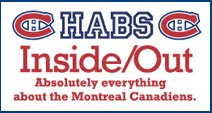





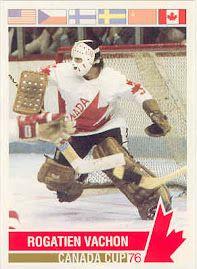
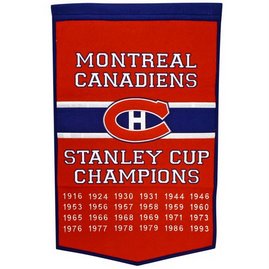







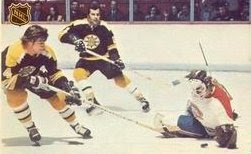



















































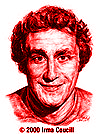



































































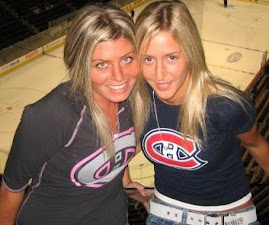


















No comments:
Post a Comment